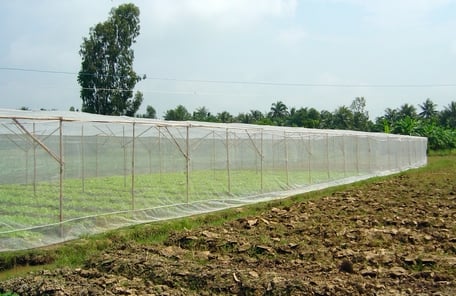 |
| Using net houses and roofs will help minimize the impact of unseasonal rains that damage vegetables. |
In the South, rain during the dry season is called unseasonal rain. Besides the positive aspect of providing a meaningful source of irrigation water for crops, livestock and domestic water for households in areas with scarce fresh water during the dry days, unseasonal rain also causes harm to crops, especially vegetables and ornamental flowers grown for Tet.
The harmful effects of unseasonal rain
According to meteorological experts, unseasonal rain occurs due to high temperatures, in the meteorological tent it is 35 degrees Celsius but in reality it is even higher, combined with the equatorial low pressure trough in the South bringing moisture causing rain. Unseasonal rain appears a lot in coastal areas, accompanied by lightning.
In years affected by La Nina (cold phase) such as 2022, unseasonal rains occur more often than in years without this phenomenon or years with El Nino (warm phase) such as 2016 and 2020. Unseasonal rains are basically small amounts of rain and do not last long.
This not only greatly affects human health, but also has significant harm to crops, because due to the dry weather, farmers are subjective and take little precautions against rain, so when there is rain accompanied by strong winds, it damages many crops, fruit trees, especially vegetables and ornamental flowers grown for Tet.
For fruit trees, unseasonal rains have more or less effects, especially reducing the fruit set rate of flowering trees, causing fruit to fall, and cracking of young fruit. In addition, unseasonal rains also create conditions for pests to develop, damaging crops and fruit trees.
For rice and vegetables, unseasonal rain causes the ripening winter-spring rice to fall over, become waterlogged, and reduce harvest yield. Prolonged rain affects Tet ornamental flowers the most, because at this time the flowers have bloomed, and when exposed to rainwater, they are easily crushed, damaged, and rotten, and then pests and diseases easily attack.
Prolonged rain also causes damage to watermelons, chili peppers, and vegetables serving the Tet market. Watermelons are prone to cracking, chili peppers are damaged, and vegetables are prone to rotting leaves. Many rice and flower growers in the Mekong Delta (including Vinh Long province) are "dead" with the unseasonal rain pouring down before, right after, and after Tet.
Solutions to reduce crop damage due to unseasonal rains
According to experts, climate change causes the weather to change erratically, not following the rule of "two rainy and sunny seasons" as it has been for a long time. Therefore, the best way is to prevent and minimize damage, such as changing awareness towards prevention and being ready to respond to erratic weather situations and unseasonal rains.
For the winter-spring rice crop, farmers should choose rice varieties with strong plants, good resistance to lodging and flooding; at the same time, arrange pumps to prevent flooding in the fields.
For fruit trees, gardeners in the province need to carefully check the condition of the trees in the garden. If they see that the tree has flowered and the young fruit has fallen a lot, avoid spraying pesticides because it is ineffective. It is necessary to monitor the weather forecast and the next flowering period to increase the application of phosphorus, potassium, organic fertilizers and prevent diseases when flowering. If the tree is budding flowers, or is about to flower late, spray pesticides to protect the flowers and add trace elements (Boron) to increase the ability to set fruit.
In addition, it is necessary to observe the garden soil to implement measures to help ventilate the roots, creating quick drying; at the same time, use appropriate growth regulators for each type of plant. For vegetables and ornamental flowers, it is necessary to ensure good drainage for the planting area and use supporting techniques.
According to experts and many people with many years of experience in growing vegetables, the prerequisite for vegetables and ornamental flowers to avoid flooding due to rain is that the planting site must have good drainage. For low-lying fields, first of all, it is necessary to make high beds and ridges with good drainage ditches; the planting area needs to have solid embankments and drainage pumps installed on days of heavy rain or high tides.
Using agricultural film is a positive technical support measure, helping farmers avoid unseasonal rains.
This material helps the beds not to be eroded by rain, washed away soil, fertilizer, and vegetables from being damaged, but also creates an environment for healthy plants, limits pests, weeds and organisms in the soil that harm vegetables; at the same time, helps increase productivity higher than traditional methods (covering with straw or not covering), especially for sandy and loose soil areas.
For households and production units with conditions, use net houses, roofs or grow vegetables in net houses, which will help minimize the impact of heavy rain and strong winds that damage vegetables.
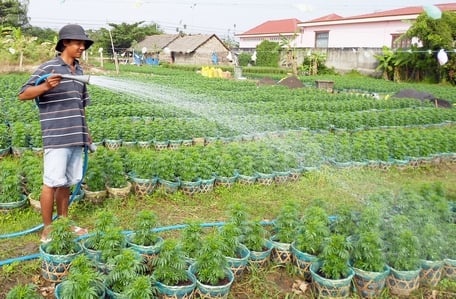 |
| Growing flowers and ornamental plants for the Tet market requires precautions against unseasonal rains that can cause damage. |
For flowers and ornamental plants, when there is unseasonal rain, it is very difficult to care for and restore flowers and ornamental plants and vegetables for Tet. Experts recommend: Immediately after the rain stops, farmers should spray pesticides to prevent pests and diseases, increase the resistance of flowers and ornamental plants by adding calcium, potassium, and trace elements to strengthen the plants and limit damage.
In addition, it is necessary to apply integrated pest management (IPM) measures to create conditions for plants to grow healthily, withstand adverse weather conditions, the environment and high pests. Regularly clean the fields, plant trees at the right density and distance to create ventilation, reduce humidity, and limit the emergence and development of pathogens.
Article and photos: TRUNG CHANH
Source


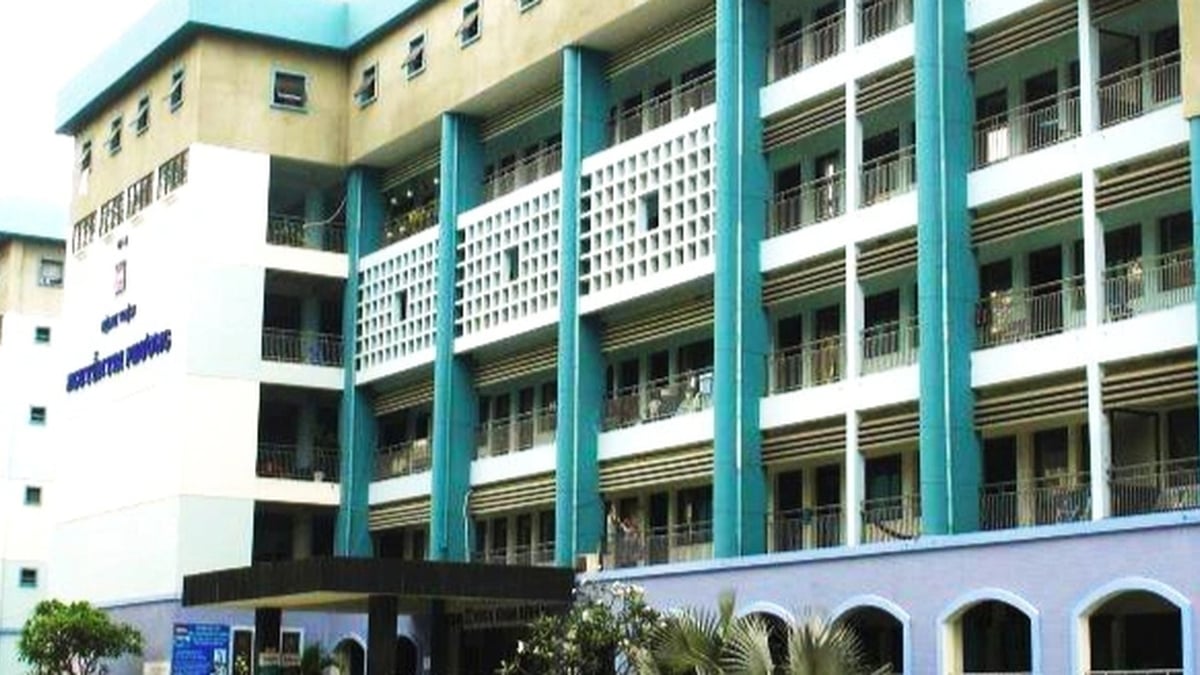
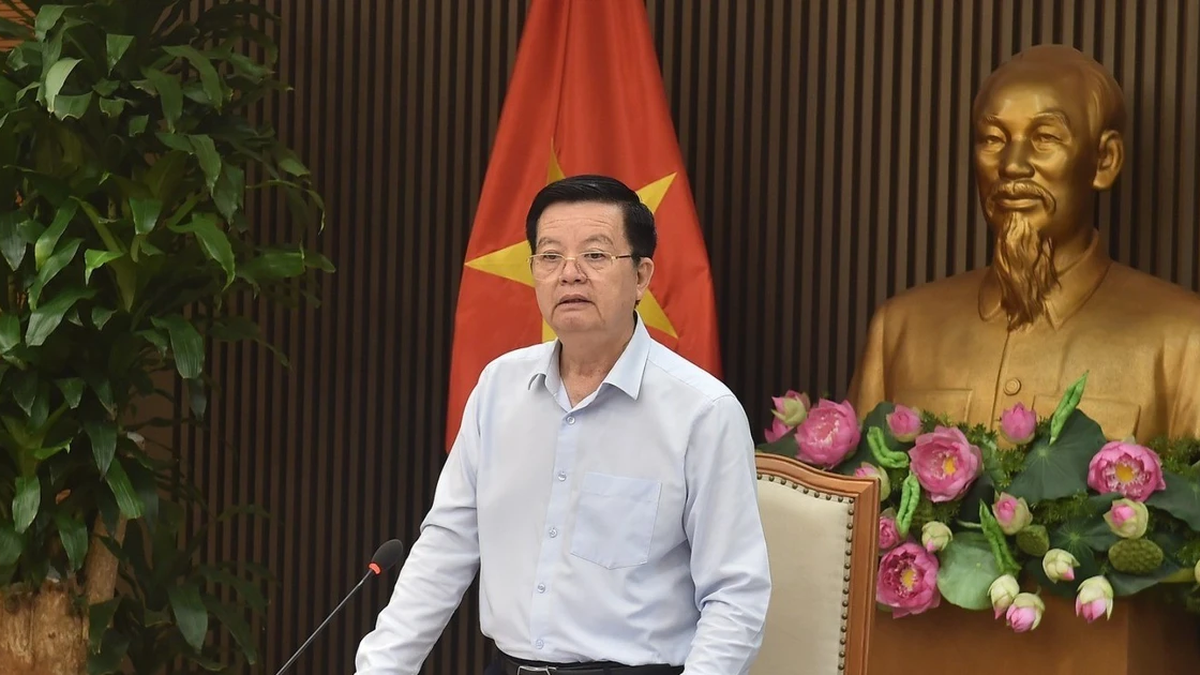







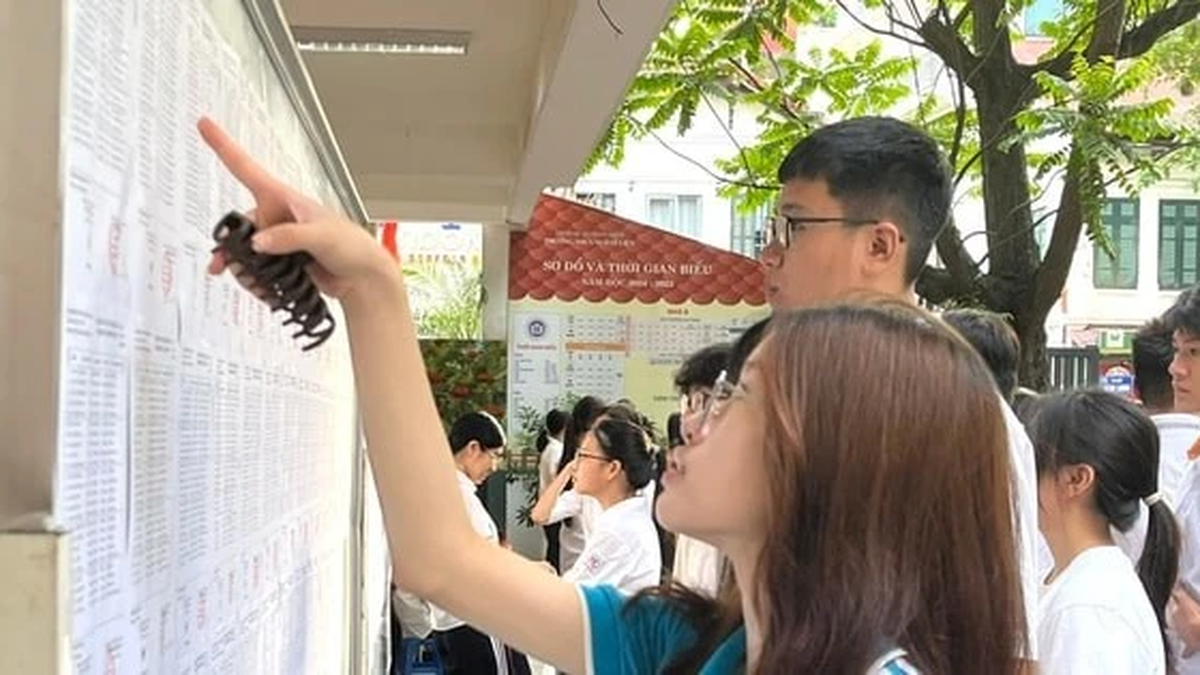
















![[Photo] National Assembly Chairman attends the seminar "Building and operating an international financial center and recommendations for Vietnam"](https://vphoto.vietnam.vn/thumb/1200x675/vietnam/resource/IMAGE/2025/7/28/76393436936e457db31ec84433289f72)







































































Comment (0)